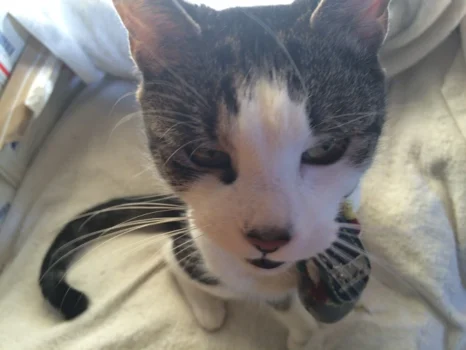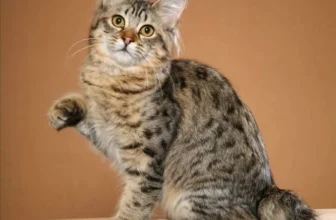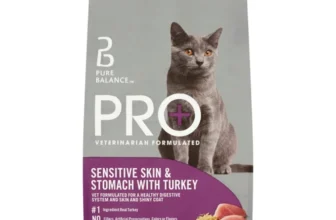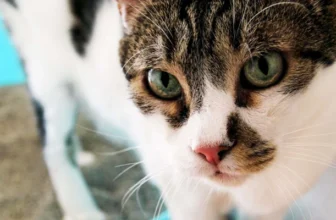As a cat owner, it can be concerning to see your furry feline exhibiting unusual behavior that may hint at a urinary tract infection. Though it’s not an uncommon ailment in cats, it’s important to understand the specifics surrounding urinary tract infections in American Bobtail cats. From potential causes to ways to prevent them, there’s a variety of information to parse through when it comes to UTIs in these particular cats. Let’s dive into the details and gain a better understanding of how to keep your American Bobtail cat healthy and happy.
Understanding Urinary Tract Infection in American Bobtail Cats
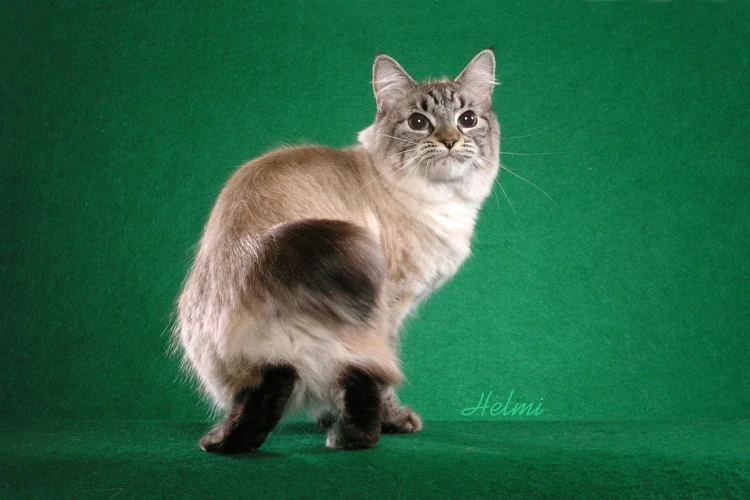
The Urinary Tract Infection is a common ailment affecting American Bobtail Cats. Cats with UTI tend to experience discomfort and can even develop serious complications if left untreated. Understanding the causes, symptoms, diagnoses, and treatment of UTI is crucial in managing the condition effectively. In this section, we will delve deeper into the topic of UTI in American Bobtail Cats, exploring what it is, its symptoms, and the various causes that trigger the infection. By the end of this content, you will gain a deeper insight into the UTI infection and how to deal with it. So, let’s get started! To know more about UTIs in American Bobtail Cats, check out our article on understanding UTI in American Bobtail Cats.
What is Urinary Tract Infection?
Urinary tract infection or UTI is a common health issue in American Bobtail cats. UTI occurs when harmful bacteria enter the urinary tract, leading to inflammation and infection. This infection can affect various parts of the urinary system, such as the bladder, urethra, and kidneys. UTIs can cause discomfort and pain to cats and, if left untreated, can lead to serious health issues.
Symptoms of UTI in American Bobtail Cats
Some common symptoms that could indicate a UTI in American Bobtail cats include frequent urination, difficulty urinating, blood in urine, urinating outside the litter box, and vocalization while urinating. Cats with UTI may also experience lethargy, loss of appetite, and fever. If you observe any of these symptoms in your American Bobtail cat, it is essential to take them to a vet for diagnosis and treatment.
There are various causes of UTI in American Bobtail cats, including bacterial infections, bladder stones, and urinary tract blockages. To understand the causes in-depth, please visit our article on /utis-in-bobtail-cats/.
Diagnosis of UTI in American Bobtail Cats
Diagnosing UTI in American Bobtail cats involves a physical exam by a vet, urinalysis, and imaging tests such as X-ray or ultrasound. During the physical exam, your vet would palpate your cat’s abdominal region to identify any abnormalities. Urinalysis would help detect any presence of bacteria, blood, or pus in the urine. Imaging tests like X-ray or ultrasound can help identify bladder stones or urinary tract blockages.
For more information on the diagnosis and treatment of UTI in American Bobtail cats, please visit our article on /diagnosis-treatment-uti-american-bobtail-cats/.
It is possible to prevent UTI in American Bobtail cats by taking certain precautions. These include ensuring proper hydration, keeping the litter box clean, and feeding your cat a high-quality diet. Find more detailed information on these preventative measures in our article on /prevention-uti-american-bobtail-cats/.
Being cautious and paying attention to your cat’s urinary habits can help identify UTI in its initial stages, making it easier to treat. If you suspect that your American Bobtail cat has UTI, take them to a vet immediately for diagnosis and treatment.
What are the Symptoms of UTI in American Bobtail Cats?
| Symptom | Description |
|---|---|
| Increased Urination | American Bobtail cats with UTI will have an urgent need to urinate more frequently than usual. They may also spend more time in the litter box than normal. |
| Painful Urination | In some cases, cats with UTI may experience pain or discomfort while urinating. They may meow or cry out while using the litter box. |
| Blood in Urine | UTI can cause inflammation in the urinary tract, leading to blood in the urine. This can be a sign of a serious infection and should be addressed immediately. |
| Licking Genital Area | If your American Bobtail cat is constantly licking their genital area, it may be a sign of UTI. This behavior is often due to discomfort or irritation in the area. |
| Loss of Appetite | Cats with UTI may experience nausea or loss of appetite. This can be a sign of a more serious infection and should be addressed by a veterinarian as soon as possible. |
| Unusual Behavior | If your American Bobtail cat is displaying unusual behavior, such as lethargy or agitation, it may be a sign of UTI. Cat owners should always be aware of any changes in their pet’s behavior or routine. |
It is important to note that these symptoms can also be indicative of other medical conditions, so it is crucial for American Bobtail cat owners to seek professional veterinary care as soon as possible if they notice these symptoms in their pets. Early detection and treatment of UTI can prevent the infection from becoming more serious and causing long-term health problems for your beloved feline friend.
Causes of UTI in American Bobtail Cats

As a pet parent, it can be concerning to see your furry friend experience discomfort and pain. Urinary tract infection (UTI) in American Bobtail cats is a common issue that can cause discomfort and affect the overall health of your pet. There are several factors that can lead to a UTI in American Bobtail cats. Let’s dive into some of the potential causes of UTI in these felines to better understand how we can prevent and treat them.
Bacteria in the Urinary Tract
Bacteria in the urinary tract is one of the most common causes of UTI in American Bobtail Cats. UTI occurs when harmful bacteria get into the urinary tract and causes an infection. E.coli is the most common type of bacteria that can cause a UTI in cats. However, other bacteria like Staphylococcus, Proteus, and Enterococcus may also be responsible for UTIs.
Several factors can lead to the presence of harmful bacteria in the urinary tract. These include:
| Causes | Description |
|---|---|
| Urine Retention | When cats don’t empty their bladder completely, some urine may remain in the bladder, providing a breeding ground for bacteria. |
| Unhygienic Conditions | Dirty litter boxes or unclean urinary catheters can harbor harmful bacteria, increasing the risk of UTI in cats. |
| Age and Gender | UTI is more common in older cats or those that have not been spayed or neutered. |
| Underlying Conditions | Conditions like diabetes, kidney disease, and cancer can weaken the cat’s immune system, making it more vulnerable to infections. |
If your American Bobtail cat is showing symptoms of UTI, it’s essential to take them to the vet immediately. Delayed treatment can lead to severe complications like kidney damage, urinary blockage, and even death.
Bladder Stones
Bladder stones are another common cause of UTI in American Bobtail Cats. These stones, also known as uroliths, are mineral formations that develop inside the bladder or urinary tract. They can be caused by a variety of factors such as diet, genetics, or urinary tract infections. There are several types of bladder stones that can develop in cats, including calcium oxalate stones, struvite stones, and urate stones.
Symptoms of Bladder Stones in American Bobtail Cats
It is important to recognize the symptoms of bladder stones in order to seek prompt treatment for your American Bobtail Cat. Common symptoms include:
- Difficulty urinating or straining while urinating
- Frequent urination, or urinating in unusual places
- Blood in the urine
- Painful urination or signs of discomfort
- Lethargy or loss of appetite
If any of these symptoms are noticed, it is highly recommended to visit a veterinarian for an evaluation, diagnosis, and treatment.
Treatment for Bladder Stones in American Bobtail Cats
The treatment for bladder stones in American Bobtail Cats may vary depending on the type, location, and severity of the stones. In some cases, small stones may be treated with medical management, while larger stones may require surgical removal. Treatment options include:
| Treatment | Description |
|---|---|
| Medications | Prescription diets or medications may be used to dissolve stones or prevent them from getting larger. These may include antibiotics, urinary acidifiers, or anti-inflammatory drugs. |
| Surgery | In cases where the stones are too large or unable to be treated with medications, surgery may be required to remove them. This may be done through a process called cystotomy, which involves making an incision in the bladder. |
| Laser Treatment | In some cases, laser treatment can be used to break up bladder stones into smaller fragments, which can then be more easily passed through the urinary tract. |
Prevention of Bladder Stones in American Bobtail Cats
There are several steps that can be taken to help prevent bladder stones in American Bobtail Cats. These include:
- Feeding a high-quality diet that is low in phosphorus, magnesium, and calcium.
- Regularly providing fresh, clean water and encouraging increased water intake through the use of water fountains or wet food.
- Ensuring proper hygiene and cleanliness of the litter box.
- Regular checkups with a veterinarian to monitor the urinary tract health of your American Bobtail Cat.
By taking these preventative measures and recognizing the symptoms of bladder stones, you can help keep your American Bobtail Cat healthy and happy.
Urinary Tract Blockage
Urinary Tract Blockage in American Bobtail Cats refers to the obstruction of the urethra, which is the tube that carries urine from the bladder out of the body. It is a serious and potentially life-threatening condition that requires immediate veterinary attention. Male cats are more prone to this condition as they have a narrower urethra than females.
Causes of Urinary Tract Blockage in American Bobtail Cats
There are several causes of urinary tract blockage in American Bobtail Cats, including:
| Cause | Description |
|---|---|
| Urinary Stones | Crystals formed in the bladder or urethra, blocking the normal flow of urine. |
| Inflammation | Inflammation of the urethra or bladder wall can cause swelling, narrowing of the urethra or complete blockage. |
| Tumors | Tumors in the urinary tract can obstruct urine flow, leading to blockage. |
| Stricture | A narrowing of the urethra caused by scar tissue from previous infections or injuries. |
Symptoms of Urinary Tract Blockage in American Bobtail Cats
Signs of urinary tract blockage in American Bobtail Cats may include:
- Straining to urinate
- Painful urination
- Unproductive attempts to urinate
- Vocalization while urinating
- Frequent small amounts of urine
- Blood in the urine
- Licking at the genital area
- Lethargy
- Loss of appetite
- Vomiting
If you notice any of these symptoms in your American Bobtail Cat, it is important to seek veterinary care immediately. Your veterinarian will perform a physical exam and may recommend diagnostic tests such as X-rays, ultrasound, or blood work to determine the cause and severity of the blockage.
Treatment of Urinary Tract Blockage in American Bobtail Cats
Treatment for urinary tract blockage in American Bobtail Cats typically involves the use of a urinary catheter to remove the obstruction and allow urination to resume. In severe cases, surgery may be necessary. Depending on the cause of the blockage, your veterinarian may also prescribe medication to relieve pain, reduce inflammation or prevent infection.
Prevention of Urinary Tract Blockage in American Bobtail Cats
To prevent urinary tract blockage in your American Bobtail Cat, ensure they drink plenty of fresh water and have access to clean litter boxes. Feeding a high-quality diet and avoiding stress can also be helpful. If you suspect your cat is experiencing urinary tract issues, see a veterinarian for prompt treatment.
Diagnosis of UTI in American Bobtail Cats
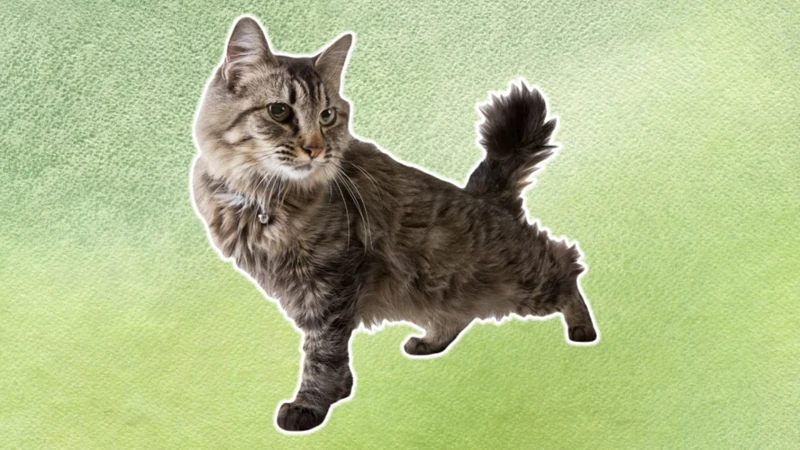
When your beloved American Bobtail cat is showing signs of discomfort or abnormal behavior, it’s important to take them to the vet. A UTI can be a common cause of these symptoms, but it’s important to diagnose the condition to provide proper treatment. The diagnostic process can seem overwhelming, but there are several methods that can help determine whether your cat has a UTI. Let’s explore the methods of diagnosis, including physical examinations, urinalysis, and imaging tests.
Physical Exam
During the physical exam, the veterinarian will perform a comprehensive assessment of the American Bobtail cat’s overall health condition. The physical exam may involve the following:
- Checking Vital Signs: The veterinarian will evaluate the cat’s vital signs, including body temperature, heart rate, and respiratory rate, to assess if the cat is experiencing any signs of fever, lethargy, or difficulty breathing.
- Palpation of Abdomen and Urinary Tract: The vet will carefully palpate the cat’s abdomen and urinary tract area to assess for any pain, discomfort, or inflammation, which may indicate the presence of urinary tract infection.
- Assessing Coat and Skin: The vet may also examine the American Bobtail cat’s coat and skin for any signs of skin irritation, infection or discomfort that could contribute to poor urinary tract health.
- Evaluation of Urinary Habits: The veterinarian may also ask about the cat’s urinary habits and any urinary issues they may have recently experienced.
- Discussion of Medical History: The vet may also inquire about the cat’s medical history, including any conditions, medications, or treatments that could be contributing to their urinary tract health issues.
All of these physical exam elements play a crucial role in determining the cause of urinary tract infections in American Bobtail cats. With a thorough physical examination, vets can better diagnose the underlying cause of UTIs and recommend appropriate treatments to prevent future infections. It is important for cat guardians to provide accurate and detailed information about their cat’s medical history and behavior to help the vet make an accurate diagnosis.
Urinalysis
During the diagnosis process of UTI in American Bobtail Cats, urinalysis is a crucial test to determine the presence of the infection. Urinalysis involves examining the physical and chemical properties of the urine sample provided by the cat. Here are the factors that are checked during the urinalysis:
- Color and Clarity: The color and clarity of the urine are checked to determine any discoloration or cloudiness that may indicate the presence of UTI.
- pH Level: The urine’s pH level is tested, as urine that is not acidic enough can lead to the growth of bacteria in the urinary tract.
- Presence of Blood: The urine sample is checked for any traces of blood. Blood in the urine can indicate UTI or other urinary tract problems
- Protein Content: Detecting high levels of protein in the urine can help diagnose a urinary tract infection.
- Leukocyte Esterase: This is an enzyme presence in white blood cells. Presence of leukocyte esterase in the urine sample suggests the presence of white blood cells, which is an indication of urinary tract infection.
- Nitrite: When bacteria, specifically E.coli, infect the urinary tract; they produce nitrite. Nitrite in the urine indicates an active UTI.
- Microscopic Urinalysis: In addition to the above factors, a urine sample is also examined under a microscope to check for the presence of bacteria or other abnormal substances that may suggest a UTI.
It is vital to follow the vet’s instructions when collecting the urine sample to ensure accurate results. Urinalysis assists the veterinarian in determining the best course of antibiotics and other treatments to eliminate UTI in the American Bobtail Cat.
X-ray or Ultrasound
Imaging tests such as X-ray or ultrasound may be recommended by the veterinarian if they suspect a more serious condition such as bladder stones or a urinary tract blockage in your American Bobtail Cat. Both X-rays and ultrasounds are non-invasive procedures that allow your veterinarian to have a better look at the urinary tract for any abnormalities.
The table below illustrates the main differences between X-ray and ultrasound:
| X-ray | Ultrasound | |
|---|---|---|
| What is it? | An imaging test that uses radiation to produce images of the urinary tract. | An imaging test that uses sound waves to produce images of the urinary tract. |
| How is it performed? | Your cat will be positioned on an X-ray table and exposed to a small amount of radiation while the X-ray machine takes a picture of the urinary tract. | A handheld device called a transducer is placed on your cat’s body and emits sound waves, which bounce off the urinary tract and produce an image on a computer screen. |
| What does it show? | X-rays can detect the presence of bladder stones, which appear as white spots on the X-ray image. | Ultrasounds can provide more detailed images of the urinary tract, and can detect not only bladder stones but also urinary tract blockages or any abnormal growths. |
| Preparation needed? | Your cat may need to be sedated to keep them still during the X-ray procedure. Your veterinarian may also recommend withholding food or water for a period of time prior to the procedure. | Your cat’s fur may need to be shaved in the area where the transducer will be placed to allow for better contact with the skin. |
| Cost | Between $150-$400 | Between $300-$500 |
It is important to follow the veterinarian’s recommendations and schedule any necessary imaging tests promptly to ensure proper diagnosis and treatment.
Treatment of UTI in American Bobtail Cats
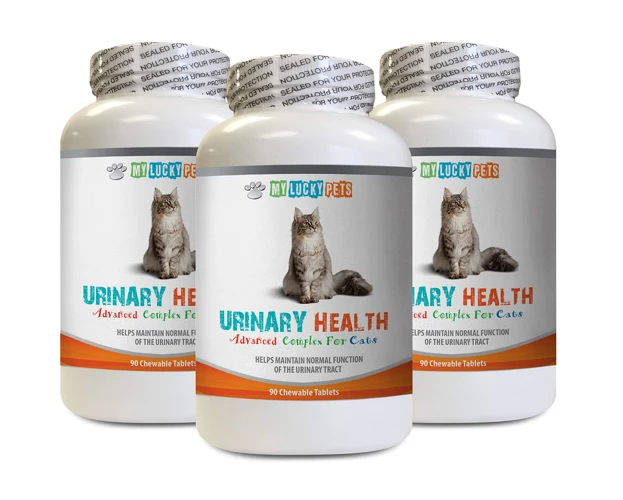
Dealing with urinary tract infections in American Bobtail Cats is a concern that should not be ignored. If your pet is diagnosed with UTI, the next step would be to initiate timely treatment to ensure a full recovery. Treatment methods for UTI in American Bobtail Cats are designed to alleviate symptoms and combat the underlying cause of the infection. The proper treatment plan for your pet will depend on the severity and cause of the UTI. In this section, we’ll explore the different treatment options for UTI in American Bobtail Cats, including antibiotics, fluid therapy, and urinary acidifiers.
Antibiotics
When it comes to treating urinary tract infections in American Bobtail cats, antibiotics are often the first line of defense. These medications work by targeting and eliminating the bacteria responsible for the infection. However, it’s important to note that not all antibiotics are created equal, and some may be more effective than others depending on the specific case.
Types of Antibiotics:
| Antibiotic | Brand Name |
|---|---|
| Amoxicillin | Trimox, Amoxil |
| Cephalexin | Keflex |
| Enrofloxacin | Baytril |
| Clavulanic acid and amoxicillin | Augmentin |
Some antibiotics are prescribed for a short course of two weeks, while others may be given for longer periods of time depending on the severity of the infection. It’s important to administer the full course of antibiotics as prescribed by the veterinarian, even if the cat’s symptoms improve before the medication is finished. Failure to complete the entire course of antibiotics can result in a relapse of the infection or the development of antibiotic-resistant bacteria.
Possible Side Effects of Antibiotics:
While antibiotics can effectively treat urinary tract infections in American Bobtail cats, they can also have certain side effects. Some cats may experience digestive upset, such as vomiting and diarrhea, while on antibiotics. Additionally, antibiotics can disrupt the natural balance of bacteria in a cat’s gut, leading to the overgrowth of harmful bacteria such as Clostridium difficile.
If a cat experiences severe side effects while taking antibiotics or if the medication does not effectively treat the infection, the veterinarian may switch to a different antibiotic or consider other forms of treatment.
Consult with a Veterinarian:
As a cat owner, it’s important to understand the role of antibiotics in treating urinary tract infections in American Bobtail cats. However, it’s recommended to always consult with a veterinarian before administering any medication to a pet. A veterinarian can evaluate the cat’s specific case and recommend the best course of treatment to ensure a full recovery without any unnecessary complications.
Fluid Therapy
During the treatment of Urinary Tract Infection (UTI) in American Bobtail Cats, one of the most effective therapies is fluid therapy. Fluid therapy involves giving fluids intravenously to the affected cat to help flush out the bacteria causing the UTI. The fluids will also help to rehydrate the cat, which is critical during a UTI.
The fluid therapy can be administered at the veterinary clinic or hospital by a vet, and in some cases, the cat can return home while receiving the therapy. This can be done through subcutaneous injections, where fluids are administered under the skin.
The length of the fluid therapy treatment will vary depending on the severity of the UTI, but it usually lasts for several days. During this period, it is important to monitor the cat’s urine output and ensure that they are drinking enough water to aid in the flushing out of bacteria.
Benefits of Fluid Therapy in treating UTI in American Bobtail Cats:
- Restores the cat’s fluid balance, which is often disrupted during a UTI.
- Helps in flushing out bacteria responsible for UTIs.
- Avoids the risk of dehydration in the affected cat, which is crucial in preventing further complications.
- Can be done at home or at a veterinary clinic depending on the severity of the UTI.
It is important to keep in mind that fluid therapy alone may not be effective in treating severe cases of UTI. A combination of antibiotics and fluid therapy may be necessary to successfully treat and cure a UTI in American Bobtail Cats. It is essential to consult with a veterinarian to determine the best course of treatment for your pet.
Urinary Acidifiers
Urinary acidifiers are another treatment option for American Bobtail cats suffering from urinary tract infection (UTI). These acidifiers work by lowering the pH level of the cat’s urine, making it more acidic. This acidity inhibits the growth of bacteria in the urinary tract, which can help to prevent and treat UTIs.
There are a few different types of urinary acidifiers available for cats, including potassium citrate and DL-methionine. These acidifiers are commonly available in the form of tablets or powder, which can be added to the cat’s food.
It is crucial to consult a veterinarian before administering any type of urinary acidifier to your cat. Improper dosage or usage can lead to the worsening of the UTI or create other health issues.
The table below provides an overview of the different types of urinary acidifiers and their key benefits:
| Type of Urinary Acidifier | Key Benefits |
|---|---|
| Potassium Citrate | Helps to dissolve bladder stones and inhibit the growth of bacteria |
| DL-Methionine | Lowers urine pH, preventing the formation of crystals and stones in the urinary tract |
It is essential to note that urinary acidifiers may not be the best treatment option for all cases of UTI in American Bobtail cats. Your veterinarian may recommend a different treatment plan based on the severity of the infection and other underlying health conditions.
Apart from urinary acidifiers, antibiotics and fluid therapy may need to be administered to your cat to treat the UTI comprehensively. Additionally, preventive measures such as proper hydration, clean litter boxes, and high-quality diets need to be implemented to prevent future UTIs.
Prevention of UTI in American Bobtail Cats
As a responsible pet parent, you want to ensure that your American Bobtail cat is healthy and happy. One important aspect of your cat’s health is preventing urinary tract infections (UTIs). These infections can cause discomfort and pain for your feline friend, and even lead to serious health complications if left untreated. But don’t worry, there are steps you can take to prevent UTIs from occurring in the first place. In this section, we will discuss some effective ways to keep your American Bobtail cat healthy and UTI-free.
Ensure Proper Hydration
Proper hydration plays a crucial role in preventing urinary tract infections (UTIs) in American Bobtail cats. Dehydration can cause the urine to be more concentrated, which can lead to the formation of crystals and stones in the bladder, and ultimately result in UTIs. It is important to ensure that your American Bobtail cat is drinking enough water to maintain a healthy urinary tract.
One way to ensure proper hydration is to provide fresh water to your American Bobtail cat at all times. You can use a water fountain or multiple water bowls to encourage them to drink more. Some cats prefer running water and may be more inclined to drink from a fountain. Additionally, it is important to clean and refill water bowls daily to ensure that the water is fresh and clean.
Another option to ensure proper hydration is to incorporate wet food into your American Bobtail cat’s diet. Wet food has a higher water content than dry food, which can help increase their hydration levels. However, it is important to avoid feeding your cat a diet that is primarily composed of dry food, as it may not provide enough hydration to maintain a healthy urinary tract.
If your American Bobtail cat is not drinking enough water or consuming enough wet food, you can try incorporating water additives into their diet. These additives can make the water more appealing to cats and help increase their water consumption.
Proper hydration is essential in preventing urinary tract infections in American Bobtail cats. By providing fresh water, incorporating wet food into their diet, and using water additives if necessary, you can ensure that your cat maintains optimal hydration levels and stays healthy.
| Ways to Ensure Proper Hydration in American Bobtail Cats | Benefits |
|---|---|
| Provide fresh water at all times | Encourages water consumption |
| Clean and refill water bowls daily | Maintains fresh, clean water |
| Incorporate wet food into diet | Increases hydration levels |
| Avoid primarily feeding dry food | May not provide enough hydration |
| Use water additives if necessary | Makes water more appealing and increases consumption |
Clean Litter Box
A clean litter box is essential to prevent UTI in American Bobtail Cats. When the litter box is dirty, it can lead to bacterial infection. Here are some tips to maintain a clean litter box.
| Tips for a Clean Litter Box |
|---|
| Scoop daily |
| Get into the habit of scooping litter at least once a day. If you have multiple cats, increase the number of litter boxes to ensure each cat has access to a clean box. |
| Replace litter weekly |
| Change the litter completely at least once a week. If not, urine and fecal matter can accumulate and heighten the risk of UTI. |
| Clean box monthly |
| Once a month, wash the litter box with soap and warm water. This helps to prevent the growth of bacteria and other harmful microorganisms. |
| Use the right type of litter |
| Avoid using strong-smelling or dusty litter. Fragrance-free and dust-free litter are better options as they reduce the risk of respiratory problems and make cleaning more comfortable. |
Maintaining a clean litter box is a small but significant step towards ensuring the health of your American Bobtail Cat. Incorporating these tips can aid in preventing UTI and improve your cat’s overall well-being.
High-Quality Diet
Providing American Bobtail cats with a high-quality diet is crucial to prevent urinary tract infections. A diet that is not suitable for cats can lead to an imbalance in the pH level of their urine, which can create a suitable environment for bacteria growth. A low-quality diet can lead to bladder stones, which can be a cause of urinary tract infections. To ensure that the American Bobtail cats are getting a balanced and nutritious diet, the following tips should be kept in mind:
| Tip | Description |
|---|---|
| Feed High-Quality Protein | Cats are obligate carnivores and require a high-quality source of protein in their diet. Ideally, the protein source should come from animal-based ingredients such as chicken, turkey, or fish. |
| Avoid Low-Quality Fillers | Cats do not require carbohydrates in their diet. Ingredients such as wheat, corn, and soy are not suitable for cats, as they can cause digestive issues and can contribute to the formation of bladder stones. Look for foods that do not contain these ingredients or that list them low on the ingredient list. |
| Provide Moisture in the Diet | Cats require moisture in their diet for proper hydration. Dry kibble is not an ideal source of moisture and can lead to dehydration. Wet food or incorporating wet food into the diet is an excellent way to provide moisture and can reduce the chance of urinary tract infections. |
| Supplement with Probiotics | Probiotics can help maintain a healthy balance of gut bacteria, which can also influence the urinary tract’s health. Incorporating a high-quality probiotic supplement into the cat’s diet can promote digestive health and reduce the chance of urinary tract infections. |
By keeping in mind and implementing these tips, American Bobtail cat owners can help ensure that their cats are getting a high-quality diet that supports good urinary tract health.
Conclusion
After learning about the causes, symptoms, diagnosis, treatment, and prevention of Urinary Tract Infections in American Bobtail cats, it is important to understand the gravity of this condition. UTI is a painful and potentially life-threatening condition that requires immediate attention from a veterinarian.
Pet owners must be vigilant of their cat’s behavior, especially if they detect any of the symptoms outlined in this article such as frequent urination, urinating in inappropriate places, and blood in the urine. It is important to seek professional help immediately to avoid any delay in treatment that can lead to severe complications.
Early diagnosis and treatment of UTI are crucial for a successful recovery of the cat. A veterinarian will diagnose the condition through physical exams, urinalysis, and imaging techniques. Timely administration of antibiotics, fluid therapy, and urinary acidifiers can help manage the symptoms and reduce the pain and discomfort associated with UTI.
Pet owners must also ensure that they take preventive measures to minimize the chances of UTI. Keeping the litter box clean, providing clean drinking water, and offering a healthy and high-quality diet can reduce the risk of infection.
In conclusion, Urinary Tract Infection is a severe condition that requires immediate professional help. Pet owners must keep a close eye on their cat’s urinary behavior and seek veterinary assistance if any symptoms are visible. With timely diagnosis, diligent treatment, and preventive measures, it is possible to protect your pet and ensure their well-being.
Frequently Asked Questions
What is the most common cause of UTI in American Bobtail Cats?
The most common cause of UTI in American Bobtail Cats is bacterial infection.
Can UTI be fatal for cats?
UTI can be fatal for cats if left untreated for a long time, as it can lead to kidney failure.
How can I tell if my American Bobtail Cat has UTI?
Some common signs of UTI in American Bobtail Cats include increased urination, difficulty urinating, blood in urine, and urinating outside of the litter box.
Do male American Bobtail Cats get UTI more than females?
Male American Bobtail Cats are more prone to UTI because of their anatomy, which makes them more susceptible to urinary tract blockages.
Can stress cause UTI in American Bobtail Cats?
Yes, stress can weaken a cat’s immune system, making it more susceptible to bacterial infection that can lead to UTI.
What can be done to prevent UTI in American Bobtail Cats?
Proper hydration, a clean litter box, and a high-quality diet can help prevent UTI in American Bobtail Cats.
Is changing my American Bobtail Cat’s diet necessary after UTI treatment?
Your vet may recommend a different diet to prevent recurrent UTI in American Bobtail Cats, but it depends on the underlying cause of the UTI.
How long does it take for antibiotics to cure UTI in American Bobtail Cats?
It usually takes a week to ten days for antibiotics to work and cure UTI in American Bobtail Cats.
Can UTI in American Bobtail Cats be genetic?
There is no evidence suggesting that UTI in American Bobtail Cats is genetic, but some breeds may be more prone to the condition.
Can I use over-the-counter medication to treat UTI in American Bobtail Cats?
No, you should never use over-the-counter medication to treat UTI in American Bobtail Cats without consulting a veterinarian as it can be harmful to your pet.

